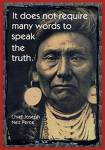
Long ago, in a verdant valley not so far away, dwelt a small coffeehouse located in a small suburban strip mall. Though its daily brew was admittedly acrid, Coffee Manoa nevertheless created a haven. Kathy, the owner/head barista, knew everyone by name, greeting customers with warm aloha, and the locale was perpetually blessed by double rainbows arcing above the tangle of aerial cables, the then-KC Drive Inn, and the slick, inky, oil-slicked concrete expanse of the Manoa Marketplace parking lot. There, eccentric poets, artists, professors, poor students, up-and-coming folk musicians, counter-culture holdovers, and caffeine junkies alike held court, recited Proust, debated philosophical issues, played endless games of chess, and lingered at the outdoor tables for hours, long after the last orts of scone had been fed to the ravenous doves and the espresso drained to the lees, without fear of expulsion from Eden. And then, one day, Starbucks moved in on the corner of East Manoa and Huapala, a site haunted by businesses past: Bank of America, and before that, Manoa Chop Suey. Coffee Manoa shuttered its windows, and the neighborhood was never quite the same after that...
Despite its decidedly mixed critical reviews, I found Taylor Clark's Starbucked: A Double Tall Tale of Caffeine, Commerce, and Culture an addictive, fun, and fast read. Clark chronicles the rise of legendary corporate giant Starbucks: how it built its expansive, international empire of clean, well-lighted coffeehouses and became those popular, yet simultaneously despised purveyors of tasteful music, pandering to high-maintenance no-dairy, double-venti caramel frappucino drinkers. He also documents the social history of coffee and America's consumption of the glorious bean, as well as ponders the ethical quagmire surrounding the economics of coffee (if you buy Fair Trade, can you drink your morning brew, sans guilt?) Clark also offers some provocative tidbits: contrary to popular conspiracy notions that Starbucks single-handedly deals death-blows to small, mom-and-pop cafes like Coffee Manoa, the caffeine mogul's ubiquitous presence actually increases sales at competitor coffeehouses, something you might've already surmised, taking a gander at the brisk action happening at the Manoa branch of Coffee Bean and Tea Leaf, just a stone's throw from the aforementioned Starbucks. So grab a cuppa joe, and start reading.





